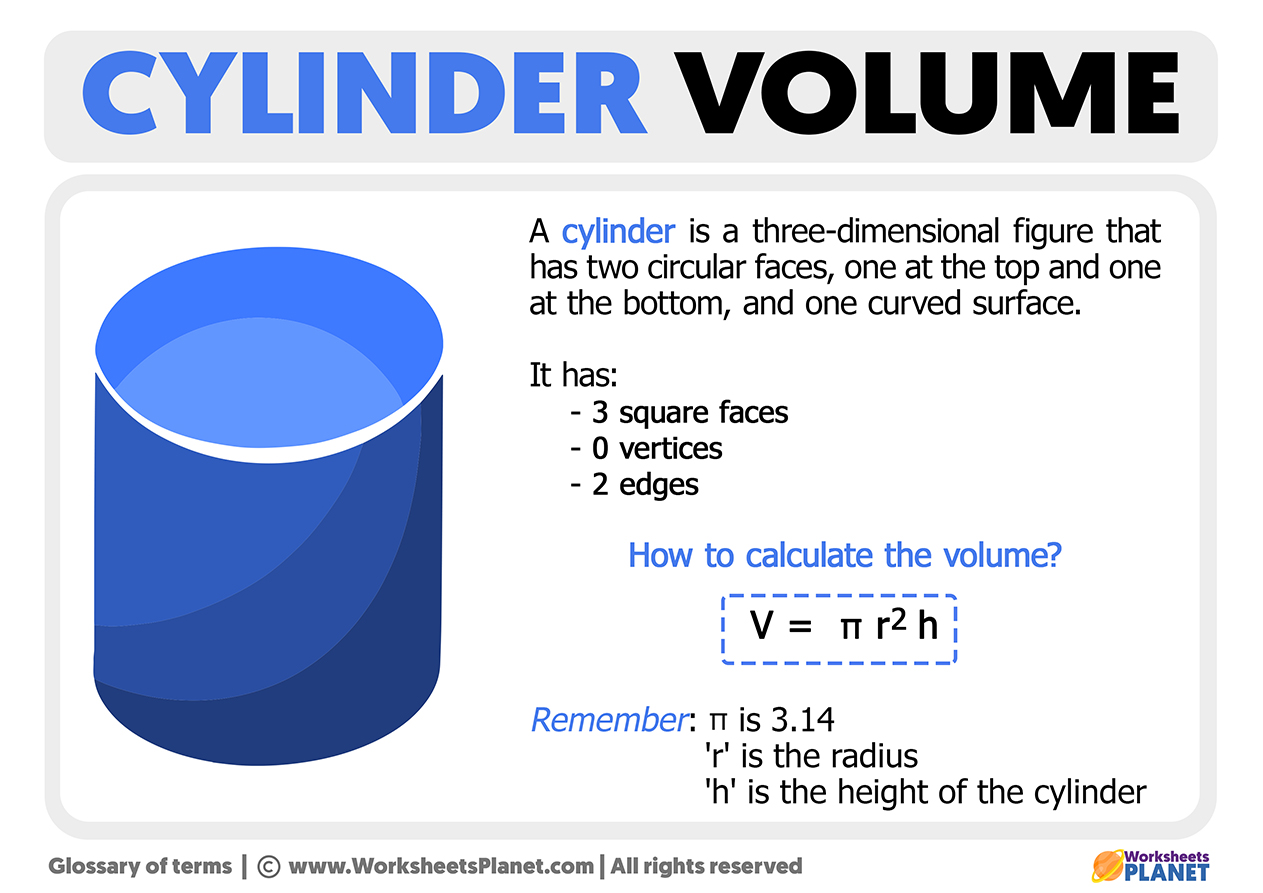Thevolume of the cylinder is calculated by multiplying the area of the base by the height. Since the base is a circle, we use the formula for the area of a circle times the height of that cylinder.

What is a cylinder?
The cylinder is a very common object also in chemical experiment laboratories where the volume is of great importance. For example, to calculate the density of an object, we need its volume.
This shape is common in everyday life, seen on soda cans and oxygen cylinders, among other objects. Calculating the volume of the cylinder is calculating the space it occupies and its capacity, for example, knowing the number of ml in the soda.
What is the formula to calculate the volume of a cylinder?
To calculate the volume of a cylinder, we need to calculate the product between the area of the base and its height. However, when we analyze the figure, we know its base is a circle. The area of a circle of radius r is calculated using the formula of the area of a circle (Area = π r²), which justifies the formula for calculating the volume of the cylinder:
Volume = π r² h
How to calculate the volume of the cylinder?
To apply the formula we need the value of the height and the radius of the cylinder, so we make substitutions for the value of the radius and height and, when necessary, use an approximation of the value of π.
Example 1:
Calculate the volume of the following cylinder (use π = 3.1):
To calculate the volume, we have r = 4 and h = 5, so, making the substitutions, we have:
V = π ∙ r² ∙ h
V = 3.1 ∙ 4² ∙ 5
V = 3.1 ∙ 16 ∙ 5
V = 3.1 ∙ 80 = 248 cm³

